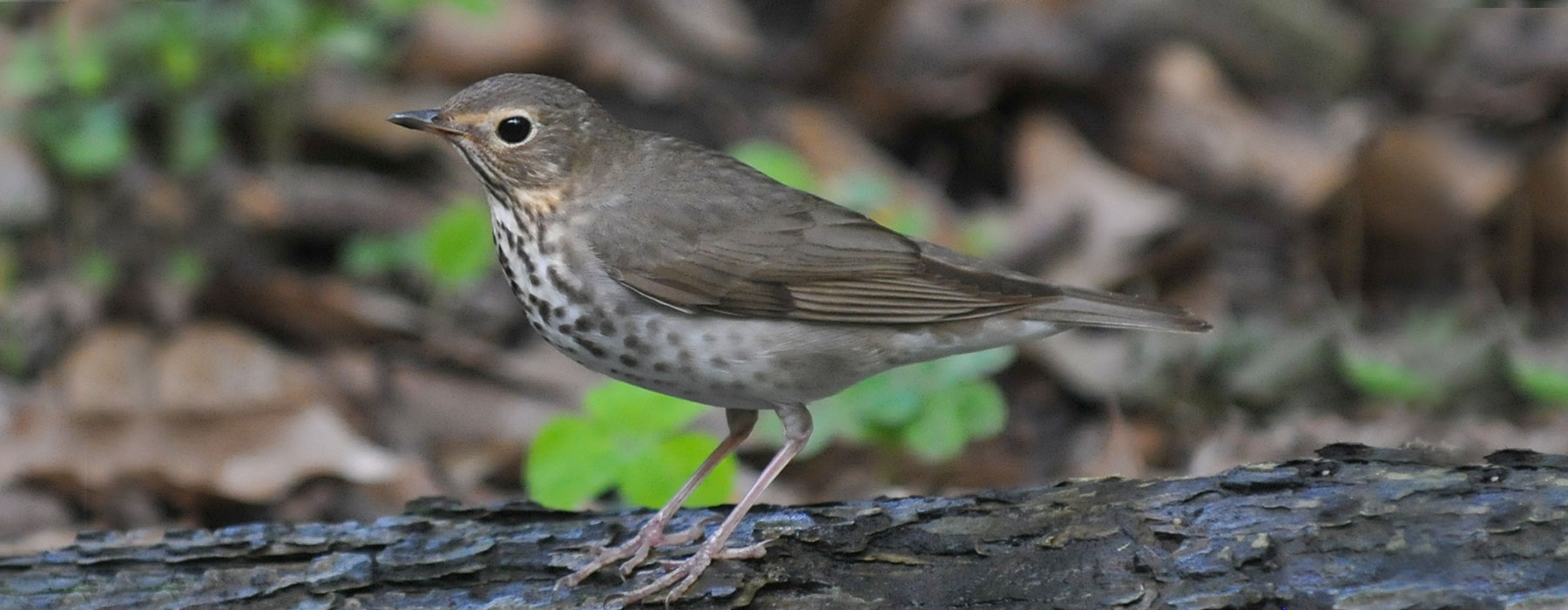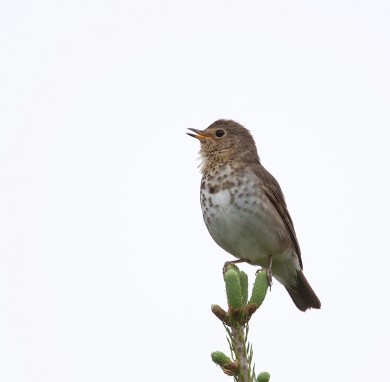During the breeding season when the sun is hanging on the horizon the upward-spiraling, flutelike songs of Swainson's Thrush can be heard echoing across the evergreen covered hills.
Named after the English naturalist William Swainson (1789-1855), the 'russet-backed' Pacific population has more reddish plumage and a slightly different song than the 'olive-backed' birds that occupy the rest of the breeding range. The russet-backed birds winter in Central America while the olive-backed population winter in South America. VCE has monitored and studied the olive-backed population in the mountains of the Northeast for over two decades.
Natural History
Swainson’s Thrush is best identified by its distinctive “spectacles” and the warm buffy tones suffusing its face and upper chest. Like other thrushes, Swainson’s Thrush is omnivorous. It eats mostly insects during the breeding season and fruits in fall and winter. Although Swainson’s Thrush may be seen occasionally standing or running on the forest floor, these birds spend less time on the ground than other thrushes.
They lay three to four pale green-blue eggs that are finely spotted with light brown in a well-built cup of moss and strengthened with twigs, leaves, and grass. The nest is usually well concealed in a forest shrub or tree.
Cool Facts
- VCE biologists discovered that in montane fir forests in the Northeast the nests of Swainson’s Thrushes are often lined with root-like strings of horsehair fungus. The fungal filaments may have antibiotic effects and help deter nest pathogens.
- The longest-lived Swainson’s Thrush on record was at least 12 years old when it was caught and re-released in Montana in 2006.
- DNA analysis shows that Swainson’s Thrush is the most ancient North American species of its genus.
- Research by scientists at Penn State University suggests that during migration, they take hundreds of ‘power naps’ that last only a few seconds at a time.
Conservation Action
Population declines cloud the future of this melodious species. According to the Boreal Songbird Initiative, an estimated 73% of the species’ North American population breeds within the Boreal Forest. VCE’s Mountain Birdwatch project monitors songbirds that breed in the montane fir and spruce forests of the Northeast, such as Swainson’s Thrush. Our data provide the only region-wide source of population information on these high-elevation breeding birds.


